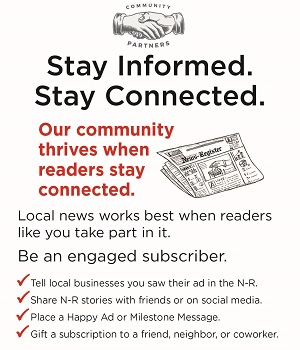The Conversation: Direct admission changing college application process
For students and families considering colleges, a relatively new option for admission is gaining popularity. In addition to the longstanding regular admissions process, and various options for early admission decisions, a new form called “direct admission” has arisen.
As a scholar of higher education administration at Boston University, let me explain what it is and how it works.
In direct admission, soon-to-be high school graduates can be accepted into a college or university without having to first submit an application. This often happens during a student’s senior year of high school, but some colleges make offers during junior year.
Direct admission is one of several strategies colleges and universities are using to make it easier for high school graduates. They are hoping it can help reverse a trend of declining higher education enrollment.
Applying to college can take a lot of money and time. It requires students to figure out the college application process, which can sometimes be complex.
Fear of rejection also discourages some students from applying.
With direct admission, the application process is eliminated and fear of rejection removed, as qualified students receive an acceptance letter from a college without needing to apply.
In some cases, all a student has to do is graduate from high school. In other cases, students have to achieve a certain GPA or certain score on the ACT or SAT.
Students don’t typically know they have qualified until they receive an acceptance letter.
Many community colleges are charged with offering educational opportunities to any member of the public. So they will often directly admit all students who successfully graduate from a given high school or district.
Other colleges are more selective. They may admit all graduates with grades or standardized testing scores above a minimum target.
In some states, all students who graduate from a public high school are offered admission to a set of public colleges and universities. Idaho was the first to do this, in 2015.
One of the biggest advantages is getting broader direct access to the students the college wants to attract, which can be different for every college. Often, the most desirable students are top scholars, hail from a particular geographic area or feature some combination of demographic attributes, like racial or ethnic background or family economic status.
This enables colleges to reach more students than they would if they only did high school visits and college fairs, or relied solely on direct marketing.
In addition, the college has an opportunity to reach potential students who are from more demographically diverse backgrounds. For example, colleges can target schools that have a lot of students from a particular group that is underrepresented on campus and that the college hopes to attract – and offer direct admissions to all the students in a graduating class.
If a college wanted to enroll more male students, it could offer direct admissions to all-boys high schools. If it wanted to enroll more Black and Latino boys, it could offer direct admissions to all-boys high schools with larger populations of Black and Latino students.
Direct admission does not require students or their families to fill out an application or pay application fees. Of course, students who accept their admission must complete paperwork and pay tuition and other costs associated with enrolling, but they need not do anything to receive an admission letter.
When an unexpected letter arrives from a well-known college, it can help students who didn’t see college in their future begin to envision themselves as college students.
Some colleges target students for direct admission even earlier than their junior years, because they know that students often decide whether they want to go to college or not as early as middle school.
Evidence shows that direct admission programs lead to more students admitted to colleges, and more students attending. When Idaho launched its statewide direct admissions program in 2015, overall college enrollment grew by about 8%.
Is this the future of college admissions? For colleges that are relatively nonselective, the answer is yes.
Direct admission is a relatively inexpensive way for an individual college, or an entire state, to make college opportunities more clearly available to more students. Colleges can get the attention of their ideal student populations.
As direct admission becomes more common, colleges — especially community colleges — will likely need additional staff and money to handle the large-scale influx.
Some institutions are even partnering with education management companies, such as Concourse, Sage Solutions and The Common Application.
These colleges may be able to spend less on marketing and recruitment over time. But initially, they will need to spend more to process students admitted directly.
Students may find themselves receiving admission letters from colleges they’ve never applied to — and have perhaps never even heard of. This may lead students to turn more to guidance counselors to help them decide which direct admission offers to accept based on a school’s cost, academic programs and other factors.
From The Conversation, an online repository of lay versions of academic research findings found at https://theconversation.com/us. Used with permission.












Comments